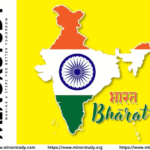7 Surprising Facts About India Having the Most Universities in the World
Education is often described as the backbone of a nation, and India has taken this to heart in a truly remarkable way. With over 4,000 universities spread across the country, India holds the world record for having the most universities — more than any other nation.
- History of Higher Education in India
- Quick Facts About India’s University System
- Timeline of India’s Higher Education Growth
- Significance of Having the Most Universities
- Important Points to Remember
- Wishing Section
- Importance in Life & Society
- Daily Life Impacts
- Observance & Related Events
- FAQs About India’s Universities
- Conclusion
To put this into perspective:
India: 4,000+ universities
United States: 3,216 universities
Indonesia: 2,595 universities
This isn’t just a number — it’s a reflection of India’s commitment to higher education, the diversity of its academic offerings, and its role as a global knowledge hub.
History of Higher Education in India
The concept of universities in India is ancient and proud. The roots of Indian higher education stretch back thousands of years.
Ancient Era:
India was home to legendary universities like Takshashila (6th century BCE) and Nalanda (5th century CE), which attracted scholars from around the world. Subjects ranged from mathematics and astronomy to medicine, literature, and philosophy.Medieval Era:
Islamic madrasas and regional learning centers thrived, focusing on theology, law, mathematics, and literature.Colonial Era:
The modern university system in India began under British rule. Institutions like the University of Calcutta, University of Bombay, and University of Madras were founded in 1857. These followed the model of British universities and emphasized formalized degree programs.Post-Independence Era:
After 1947, India invested heavily in expanding higher education, creating central universities, state universities, and specialized institutes like IITs, IIMs, AIIMS, and agricultural universities.
Quick Facts About India’s University System
India has 4,000+ universities, including central, state, deemed, and private institutions.
The University Grants Commission (UGC) oversees higher education standards.
India also has over 40,000 affiliated colleges connected to these universities.
Specialized institutions cover engineering, medicine, agriculture, law, and fine arts.
India’s oldest modern university is the University of Calcutta (est. 1857).
The IITs and IIMs are globally recognized for excellence.
Indian universities cater to millions of students annually, making it the largest higher education system by enrollment.
Timeline of India’s Higher Education Growth
6th Century BCE – Takshashila University flourishes.
5th Century CE – Nalanda University becomes an international center of learning.
1857 – First modern universities (Calcutta, Bombay, Madras) established.
1947 – Around 20 universities exist at the time of independence.
1950s-70s – Creation of IITs, AIIMS, and agricultural universities.
1990s – Private universities emerge.
2020s – Crosses the 4,000-university mark, with rapid digital education growth.
Significance of Having the Most Universities
Educational Access: More universities mean more opportunities for students, especially in rural areas.
Diversity of Learning: India offers courses in multiple languages and disciplines.
Cultural Exchange: International students come to India for affordable and quality education.
Economic Growth: Universities fuel innovation, entrepreneurship, and skilled workforce development.
Research Opportunities: Larger networks of institutions encourage diverse research projects.
Important Points to Remember
Quantity should be matched with quality — having the most universities is an achievement, but ensuring high academic standards is equally crucial.
India’s higher education system is one of the most diverse in the world.
Universities play a role not only in academics but also in community development.
Wishing Section
“May India’s universities continue to shine as beacons of knowledge, nurturing generations of learners who will shape a brighter, smarter, and more compassionate world.”
Importance in Life & Society
For Students: Opens up more pathways to pursue careers and passions.
For Society: Educated citizens contribute to social harmony, innovation, and governance.
For the Economy: Universities produce professionals who strengthen industries and services.
For Culture: Academic institutions preserve and promote art, literature, and heritage.
Daily Life Impacts
Access to universities means families can dream of higher education without traveling abroad.
Specialized universities cater to regional needs — agriculture in farming states, marine studies in coastal states, IT in tech hubs.
University-driven research influences healthcare, infrastructure, and environmental policy.
Observance & Related Events
While there is no official “University Day” in India, various foundation days of universities are celebrated with pride. Additionally, National Education Day (11 November) honors the role of education in nation-building.
FAQs About India’s Universities
Q1: Which Indian state has the most universities?
Rajasthan and Uttar Pradesh are among the top states with the highest number.
Q2: Are all Indian universities public?
No, India has a mix of central, state, private, and deemed universities.
Q3: Which is the largest university by enrollment?
Indira Gandhi National Open University (IGNOU) serves millions of students worldwide.
Q4: How is quality ensured across so many universities?
The University Grants Commission (UGC) and accreditation bodies like NAAC monitor quality.
Q5: Does having more universities mean better education?
Not automatically — quality, infrastructure, faculty, and curriculum matter equally.
Conclusion
India’s position as the country with the most universities in the world is more than just a statistical fact — it’s a symbol of the nation’s long-standing commitment to learning. From ancient centers like Nalanda to modern research hubs, India’s educational journey reflects both tradition and innovation.
The challenge ahead is ensuring that each of these thousands of institutions not only imparts knowledge but also inspires critical thinking, creativity, and social responsibility. If this balance is achieved, India will not just have the most universities — it will have the best universities.








